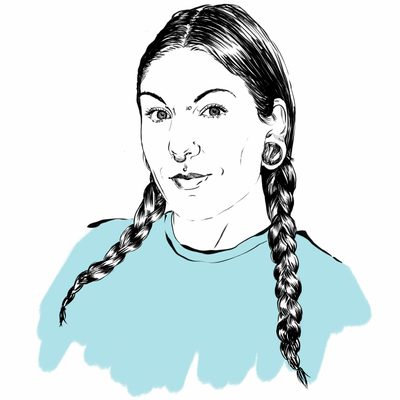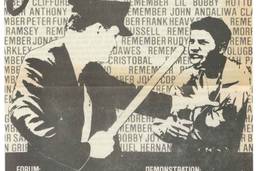The Violent Story of American Whiteness

ILLUSTRATION BY DAVID HOSKINS
Three writers dive into the depths of white supremacy in America, from alt-right dating sites to the neo-Nazi movement to protect Confederate monuments.
The United States of America is a white supremacist nation. It always has been. Its white founders, venerated and lionized though they are in textbooks and on courthouse lawns, explicitly intended the country to be this way. The country’s founding documents make that goal clear. Through the centuries, the predominantly white ruling class has worked overtime to uphold this status quo, even as the goalposts periodically shift. A trio of new books delve into this rotten heart of American whiteness and explore how its bloody footprints smudged the nation’s past and continue to influence its uncertain future. Connor Towne O’Neill’s Down Along with That Devil’s Bones: A Reckoning with Monuments, Memory, and the Legacy of White Supremacy, Talia Lavin’s Culture Warlords: My Journey into the Dark Web of White Supremacy, and Seyward Darby’s Sisters in Hate: American Women on the Front Lines of White Nationalism take slightly different approaches but ultimately reveal how deeply white supremacy is entrenched in this country. These writers — a white man, a Jewish woman and a white woman — dig deep into the white supremacist culture wars, from 4chan’s neo-Nazi cesspools to the insidious tradwives movement to the battle-scarred heart of Dixie. Their findings are all too timely.
In journalist Connor Towne O’Neill’s book, Down Along with That Devil’s Bones, the Civil War-era ghosts of dead racists (and the lost Southern cause) take center stage in this deeply reported, occasionally personal, odyssey. O’Neill’s interest was sparked on March 7, 2015 — the anniversary of the Bloody Sunday march across the Edmund Pettus Bridge in Selma, Ala. — when he stumbled upon a group of locals working to replace a statue of Confederate general Nathan Bedford Forrest. The statue had been stolen three years prior. Forrest, a former slave trader, is known as the Butcher of Fort Pillow for overseeing the massacre of more than 100 Black soldiers who had surrendered during the Civil War. After the fall of the Confederacy, Forrest became the first Grand Wizard of the Ku Klux Klan. He is one of history’s most contemptible figures, yet O’Neill soon discovered, in some quarters, Forrest is still hailed as a hero.
As O’Neill travels through the South in search of a deeper understanding, he passes through towns and cities studded with monuments to the bloodthirsty Confederate general, and interviews locals who feel called to protect the statues as well as those dead set on tearing them down. On one side of the debate, there is the demand for justice and acknowledgement of this country’s sins, personified (in the book) by dedicated activists like Shelby County Commissioner Tami Sawyer, a Memphis organizer who founded the #TakeEmDown901 movement to remove Confederate monuments. On the other side is a stubborn allegiance to a vicious heritage, exemplified by men like Lee Millar, the spokesperson for the Memphis chapter of the Sons of Confederate Veterans. When O’Neill encounters Millar after the city’s Forrest statue was torn down in December 2017, Millar dismisses those opposed to the statue as having “a mental handicap.” Millar tells O’Neill, “They say [Forrest] was a slave owner. Well big deal, so were 11 of the first 13 presidents … You can’t blame him for that because he was just in business.”
The wider, national debate about the country’s many Confederate monuments (and other statues of assorted racist monsters) continues to ferment and has boiled over in cities like Charlottesville, Va., New Orleans, Durham, N.C., and as far north as Philadelphia (where a proud history of abolitionism contrasts with the city’s former status as a slave trading outpost). These contradictions are everywhere in America, a country that has never truly reconciled with its racist legacy or offered justice to those who have borne the brunt of its evil.
Since the 2016 election of President Donald Trump, those who cling to fabrications of this past glory have been publicly rewarded by the holder of the country’s highest office with dog-whistled recognition. But America’s various racist movements are not content with a mere wink-and-a-nod reception from the White House. Today’s white supremacists, as journalist Talia Lavin discovered during her research for Culture Warlords, find themselves encouraged to violently impose their views on others, itching for a war.
Lavin goes undercover in online incel forums (short for “involuntarily celibate,” a breeding ground for misogyny), encrypted neo-Nazi chat rooms, boogaloo meme factories (home to violent, far-right internet culture) and the toxic morass of racist YouTube, observing how social media giants (including Twitter and Facebook) provide fertile ground for extremist movements and their violent apologists. In 2019, Lavin is chased out of a conference full of far-right social media personalities, then infiltrates chat rooms full of Ukrainian terrorists hungry to start a race war in the United States. Throughout her research, she uncovers a bottomless well of bloodthirst against a host of perceived enemies, including Jewish people like herself.
In one memorable excursion, dubbed Operation Ashlynn, Lavin ventures into the sad, malevolent membership of a white nationalist dating site. She poses as a facsimile of white nationalism’s ideal woman — blonde, thin, committed to traditional gender roles, racist — offering a disturbing peek into the way white supremacist men think of women.
Seyward Darby’s Sisters in Hate exposes the real-life white women counterparts to Operation Ashlynn’s online world. As Darby explains in the book, while white men have always been the far right’s most recognizable faces (and are responsible for the lion’s share of the violence that propels the movement), “There is other work keeping the flames of hate alive. That work is often done by women.”
White womanhood has long been weaponized against Black people and people of color, used to drive injustice and violence. As a demographic, white women are often painted as innocents (or entirely kept out of the historical record), but they actively participated in (and profited from) the enslavement of human beings. Acting as agents of white supremacy, they later fought tooth and nail to uphold the systems that protected their white privilege. Now, long after slavery has mostly ended (the U.S. mass incarceration system is considered modern-day slavery), the spiritual progeny of those women continue to serve as willing foot soldiers in the cause.
Darby profiles three modern women, all born in 1979, who make up a rogue’s gallery of virulent racism, willful obfuscation, dangerous propaganda and pure hatred. Corinna Olsen is a depressed neo-Nazi who becomes an FBI informant. Ayla Stewart is a white nationalist tradwife (far-right shorthand for a submissive, “traditional wife”) who gained a following by preaching strict gender roles, white pride and female submission to men. Lana Lokteff, arguably the most odious of the lot, runs an influential far-right media company called Red Ice and serves as an eager propagandist, conspiracy theorist and mouthpiece for the white supremacist movement. All three find ways to exploit their privilege as white women to further regressive, bigoted views. Darby’s approach, as an uneasy observer, gives these women plenty of space to indict themselves.
Each of these three books has a distinct focus, but they are ultimately part of the same story. Darby’s book is a chilling document on its own but is especially unsettling paired with Lavin’s findings on the romantic yearnings of white supremacist men. O’Neill’s self-reflection — on the ways he, as a white man, benefits from white supremacy — echoes the care taken by Darby and Lavin to examine their respective roles as white or white-passing women who have been alternately coddled and punished by the same white supremacist system (which happens to place some of their more willing sisters on a swastika-emblazoned pedestal). All three emphasize the need to dismantle white supremacy.
Their narratives even share some common geography, like the neo-Nazi terror attack at the Unite the Right white supremacist rally in Charlottesville, Va., on August 12, 2017. O’Neill describes how Charlottesville’s Confederate statues became a cause célèbre for the neo-Confederates and neo-Nazis who invaded the sleepy college town. Lavin attends a 2019 memorial service for Heather Heyer — the woman who was killed at the rally when a neo-Nazi ran his car into a crowd of peaceful counter-protesters — to collect stories from locals who survived the attack. Darby explains how Ayla Stewart, who was scheduled to speak at the rally, rationalized away the events and conjured up ways to blame Heyer for getting murdered.
These interlocking books offer a glimpse into the endless ways white supremacy enmeshes itself in every facet of American society, but they also make the path forward clear and create space for optimism by highlighting the efforts of the activists, anti-fascists and organizers working to expose and eradicate the weed of white supremacy. Only by pulling it up from the root can we stop its spread.
Kim Kelly is a freelance journalist and author based in Philadelphia, PA. She is a labor writer for In These Times, a labor columnist at Teen Vogue and Fast Company, and regularly contributes to many other publications. Her first book, FIGHT LIKE HELL: The Untold History of American Labor, is now available from One Signal/Simon & Schuster. Follow her on Twitter at @grimkim and subscribe to her newsletter, Salvo, here.









